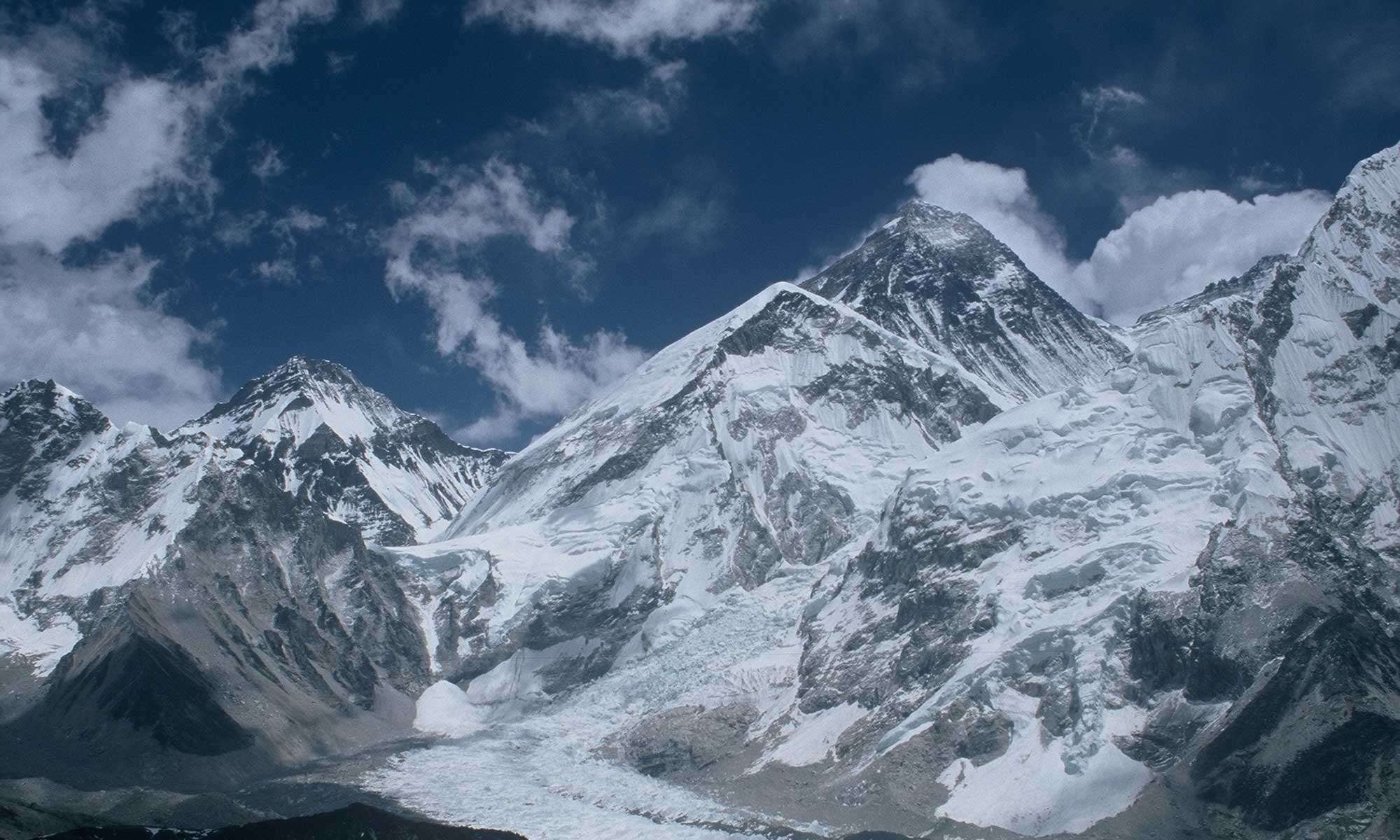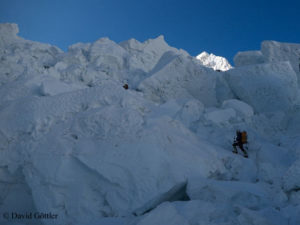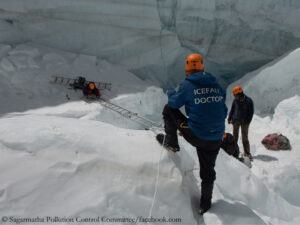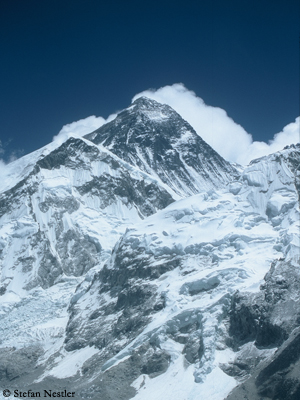Although the spring climbing season on Mount Everest has not yet really begun, the first accident is already reported from the highest mountain on earth. According to information from Nepal’s Everest Chronicle portal, a serac collapsed early this morning on the route through the dangerous Khumbu Icefall. Three Sherpas, who were supposed to bring material to Camp 2 at an altitude of about 6,400 meters, were missing, it said. It is possible that they were washed into a crevasse by the ice masses.
A representative of Nepal’s Ministry of Tourism confirmed the incident. The missing climbers, the official said, were three Sherpas from the team of expedition operator Imagine Nepal. The company was contracted by the Expedition Operator’s Association Nepal (EOA) to fix the ropes from Camp 2 to the summit for all teams and will subsequently also attempt to guide its own clients to the highest point on earth. The possibility of finding the three climbers missing in the icefall alive is “very slim”, Lakpa Norbu Sherpa, the Everest Base Camp coordinator of the Himalayan Rescue Association, told the Kathmandu Post newspaper.
Icefall route opened only six days ago
Only on 6 April, the so-called Icefall Doctors, eight Sherpas specialized in working in the icefall, had opened the route through the ice labyrinth and then up to Camp 2. The Icefall Doctors are selected and paid by the Sagarmatha Pollution Control Committee (SPCC), an organization that was originally only concerned with environmental protection in the Everest National Park. Since 1997, the SPCC has also been responsible for the route through the Khumbu Icefall on behalf of the government of Nepal. Each member of the commercial expedition teams has to pay $600 for the dangerous work of the Icefall Doctors to the SPCC. In 2014, 16 Nepalese climbers had died in an avalanche accident in the icefall.
“Hillary’s Horror”
Even the very first climbers had respect for the Khumbu Icefall. This is underlined by the nicknames given by the members of the successful British Everest expedition in 1953 to the particularly risky passages through the ice labyrinth: “Hillary’s Horror,” “Mike’s Horror,” “Atom Bomb Area.” The icefall was “the key to all attempts on the south side of Everest,” wrote Sir Edmund Hillary, the New Zealander, who, together with Sherpa Tenzing Norgay, stood on the 8849-meter-high summit for the first time on 29 May 1953.
Even 70 years after this first ascent, the Khumbu Icefall remains the passage of the normal route on the Nepalese side of Everest with the highest objective dangers. This was demonstrated once again today.



